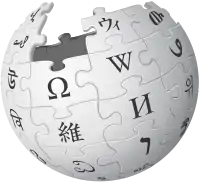Riemannian
English
Adjective
Riemannian (not comparable)
- (mathematics) Of or relating to the work, or theory developed from the work, of German mathematician Bernhard Riemann, especially to Riemannian manifolds and Riemannian geometry.
- 2003, Maung Min-Oo, The Dirac Operator in Geometry and Physics, Steen Markvorsen, Maung Min-Oo (editors), Global Riemannian Geometry: Curvature and Topology, Springer, page 62,
- Similarly,
is represented by the closed differential form
- where is the Riemannian curvature of the metric , regarded as an -valued two form, and is the Pfaffian, which is an invariant polynomial defined on the Lie algebra of skew symmetric matrices in even dimensions.
- Similarly,
is represented by the closed differential form
- 2010, Charles P. Boyer, Krzysztof Galicki, Chapter 3: Sasakian geometry, holonomy, and supersymmetry, Vicente Cortés (editor), Handbook of Pseudo-Riemannian Geometry and Supersymmetry, European Mathematical Society, page 41,
- As the preferred metrics applied to symplectic forms are Kähler metrics one could ask for the Riemannian structure which would make the cone with the metric together with the symplectic form into a Kähler manifold. Then and define a complex structure . Alternatively, one could ask for a Riemannian metric on which would define a Kähler metric on via a Riemannian submersion.
- 2012, Yves Carriere, Appendix A: Variations on Riemannian Flows, Pierre Molino, Riemannian Foliations, Springer, page 217,
- The object of this appendix is to give a summary of known results on 1-dimensional oriented Riemannian Foliations.
- 2003, Maung Min-Oo, The Dirac Operator in Geometry and Physics, Steen Markvorsen, Maung Min-Oo (editors), Global Riemannian Geometry: Curvature and Topology, Springer, page 62,
- (music) Relating to the musical theories of German theorist Hugo Riemann, particularly his theory of harmony, which is characterised by a system of "harmonic dualism".
- 1994, Daniel Harrison, Harmonic Function in Chromatic Music: A Renewed Dualist Theory and an Account of Its Precedents, University of Chicago Press, page 7,
- And not only theory: most central European composers of this century were schooled in Riemannian doctrine of one type or another.
- 2004, Jairo Moreno, Musical Representations, Subjects, and Objects: The Construction of Musical Thought in Zarlino, Descartes, Rameau, and Weber, Indiana University Press, page 1,
- Or take, for example, the rehabilitation by late-twentieth-century North American theorists of Riemannian Tonnetze as a means to navigate the voice-leading intricacies of much chromatic and post-chromatic music.
- 2009, Marek Žabka, Generalized Tonnetz and Well-Formed GTS: A Scale Theory Inspired by the Neo-Riemannians, Elaine Chew, Adrian Childs, Ching-Hua Chuan (editors), Mathematics and Computation in Music, 2nd International Conference, Proceedings, Springer, page 286,
- The paper connects two notions originating from different branches of the recent mathematical music theory: the neo-Riemannian Tonnetz and the property of well-formedness from the theory of the generated scales.
- 1994, Daniel Harrison, Harmonic Function in Chromatic Music: A Renewed Dualist Theory and an Account of Its Precedents, University of Chicago Press, page 7,
Derived terms
- neo-Riemannian
- pseudo-Riemannian
- Riemannian geometry
- Riemannian manifold
See also
Further reading
- (mathematics):



- (music):



This article is issued from Wiktionary. The text is licensed under Creative Commons - Attribution - Sharealike. Additional terms may apply for the media files.